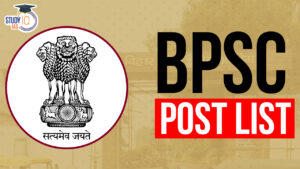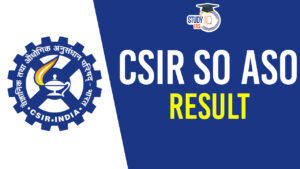Daily Current Affairs for UPSC 2022
Q) Recently seen in news, the term ‘Kilonova’ is best related to which one of the following:
- An explosion in space that occurs at the end of a massive star.
- The burst of light caused by the merger of two red giant stars
- An explosion caused by the merger of two neutron stars
- The astronomical event of the merging of two stellar black holes
Daily Current Affairs for UPSC – 10 December 2022
Explanation:
- Option (3) is correct: An astronomical event known as kilonova has produced a flash of light in the sky, generating curisoty among scientists. Kilonova is an explosion caused during the merger of two neutron stars or a neutron star and a black hole. Both kilonova and supernova produce energetic form of light called Gamma-ray burst (GRB). Kilonova usually generates shorter pulses, lasting less than 2 seconds. Kilonovae explosion are also known for red colours, which is a sign of the rare, heavy elements like gold, platinum and thorium produced in their ejecta. The event occurred on the outskirts of the Milky Way located approximately 1 billion light-years away from Earth. Gamma-ray burst (GRB) are powerful astronomical cosmic bursts of high-energy gamma-rays are called GRBs. They are usually associated with supernova explosion. GRBs are of two varieties, long and short. Long GRBs (couple of seconds to a minute) form when a star at least 10 times the mass of our Sun explodes as a supernova. Short GRBs (less than 2 seconds) occur when two compact objects, like two neutron stars or a neutron star and a black hole, collide to form a kilonova.
Q) With reference to appointment of judges, consider the following statements:
- The Constitution provides for a collegium of five senior-most judges to appoint judges of the Supreme Court.
- The judges of a high court are appointed by the governor after consultation with the chief justice of India.
- The government cannot return the recommendations sent by the collegium.
Which of the statements given above are not correct?
- 1 and 2 only
- 1 and 3 only
- 2 and 3 only
- 1, 2 and 3
Explanation:
- Statement 1 is incorrect: Collegium System of Judges Appointment is a system through which judges are appointed and transferred in the Supreme Court and high courts across the country. In the Supreme Court, a group of five senior-most judges, led by the chief justice of India, decides on all the appointments and transfers of judges in the apex court. These appointments include elevation of high court judges to the apex court and direct appointments of senior advocates as apex court judges. Collegium system was not mentioned in the Constitution, its legal basis is found in three Supreme Court judgments, usually referred to as the ‘Judges Cases’ concerning the higher judiciary. Until May 13, 2023, the Supreme Court collegium will have six members instead of the usual five-most senior judges. According to Bar and Bench, this arrangement has been made to make space for Justice Sanjiv Khanna, who will be the successor to Chief Justice of India (CJI) D.Y. Chandrachud if seniority is followed.
- Statement 2 is incorrect: The judges of a high court are appointed by the President. The chief justice is appointed by the President after consultation with the chief justice of India and the governor of the state concerned. For appointment of other judges, the chief justice of the concerned high court is also consulted. In case of a common high court for two or more states, the governors of all the states concerned are consulted by the president.
- Statement 3 is incorrect: The government could return collegiums’ recommendations and could ask it to re-consider the names of the judges forwarded for appointment .But if the same recommendations are made by the Collegium again, than the government is bound by the decision of the collegium.
Q) Consider the following statements about the air quality in Indian cities:
- The effect of local breeze reduces the concentration of pollutants in coastal cities.
- SAFAR disseminates real-time air quality data for only four Indian cities.
Which of the statements given above are correct?
- 1 only
- 2only
- Both 1 and 2
- Neither 1 nor 2
Explanation:
- Statement 1 is correct: Coastal cities like Mumbai produces high amount of air pollutants but it has the advantage of local breeze, which prevents accumulaton of polluntants. However, the phase of bad air quality has been particularly prolonged this year. Wind speeds in Mumbai were distinctly slower this year, reducing its ability to drive away accumulated pollutants. This was followed by a change in flow patterns. The winds typically move from land to sea for a few days, and then from sea to land. This cyclic pattern of winds repeats every three-four days. But recently there has been an absence of cyclic pattern of winds. Instead of repeating every 3-4 days, it is taking place after a week, even 10 days. This has led to large-scale accumulation of pollutants over the city. Even if cyclic pattern takes place, the wind speed is not adequate enough to drive away pollutants.
- Statement 2 is correct: SAFAR (System of Air Quality and Weather Forecasting and Research) is a country-wide initiative that aims to provide location-specific information about the air quality on a real-time basis. Currently it is available in Delhi, Pune, Ahmedabad and Mumbai. SAFAR disseminates the data on pollution in the form of simplified and colour-coded information. Apart from air quality of cities, SAFAR also offers information on the weather conditions, ultraviolet radiation, and emissions in the cities.
Q) With reference to Private member bill, which of the following statements are correct?
- It can only be introduced by a member of the ruling party who is not a minister.
- An advance notice of one month has to be given before its introduction.
- The private member bill can only be introduced and discussed on Fridays.
- A maximum of four private member’s bills can be introduced per session of Parliament.
Select the correct answer using the code given below:
- 1 and 4 only
- 2 and 3 only
- 1, 2 and 3 only
- 2, 3 and 4 only
Explanation:
- Statement 1 is incorrect: Private Member bill is introduced by non-minister member (ruling party or opposition). It can be introduced in either house of the Parliament. A Private Member is a Member of Parliament (MP), who is not a minister. The bill introduced by a minister is termed a Public Bill. Recently a Member of Parliament from the ruling party has introduced a private member bill on UCC in the Rajya Sabha.
- Both Statements 2 and 3 are correct: One month’s advance notice has to be given before introduction. These bills can be introduced and discussed only on Fridays. The introducing member is responsible for drafting the bill. A private member bill has less chance of approval.
- Statement 4 is incorrect: A maximum of 3 private member bills can be introduced per session of Parliament. The Parliamentary Committee on Private Member’s Bills and Resolutions is responsible for going through such Bills and classifying them based on their urgency and importance. A private member bill draws the government’s attention to certain issues and gaps in the existing legal framework, which require legislative intervention.
Q) Consider the following statements about Districts as Export Hub (DEH):
- DEH aims to link local producers in rural and remote districts with global supply chains.
- The Department of Commerce is the nodal agency for the implementation of DEH.
- The One District, One Product (ODOP) initiative has been merged with DEH.
Which of the statements given above is/are correct?
- 1 only
- 2 and 3 only
- 1 and 3 only
- 3 only
Explanation:
- Statement 1 is correct: Districts as Export Hub (DEH) aims to link local producers in rural and remote districts with global supply chains, and bring them into the economic mainstream. District Export Promotion Committee (DEPC) is formed which is responsible for preparing a district export action plan. It aims to mobilize the potential of each district of the country and to achieve its potential as an export hub. To enable MSMEs, farmers and small industries to get benefit of export opportunities in the overseas markets. To shift focus on District led Export Growth for self-sufficiency and self-reliance. Reduce transaction cost for the exporter at various stages of export cycle.
- Statement 2 is incorrect: Department of Commerce, Ministry of Commerce is the parent ministry for “Districts as Export Hubs” initiative. The Director General of Foreign Trade (DGFT) is the nodal agency under Department of Commerce for implementation of DEH Initiative. District as Export Hub Initiative strives to achieve the objectives of Agriculture Export Policy. Under it, products including agricultural products with export potential have been identified in all 733 districts across the country.
- Statement 3 is correct: According to Ministry of Commerce & Industry, One District One Product (ODOP) initiative has been operationally merged with ‘Districts as Export Hub (DEH)’ initiative. One District One Product (ODOP) initiative is a transformational step to realize the potential of a district, fuel economic growth, generate employment and rural entrepreneurship and move towards the goal of ‘Aatmanirbhar Bharat’.


 BPSC Post List 2024, Check out Salary Wi...
BPSC Post List 2024, Check out Salary Wi...
 CSIR SO ASO Result 2024 Expected Soon, C...
CSIR SO ASO Result 2024 Expected Soon, C...
 UPSC Syllabus 2024 - IAS Prelims and Mai...
UPSC Syllabus 2024 - IAS Prelims and Mai...

















